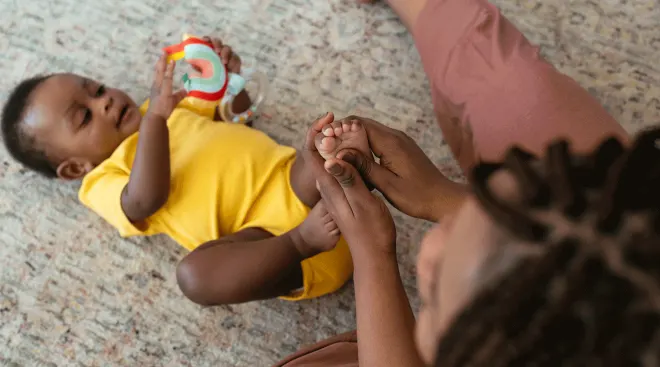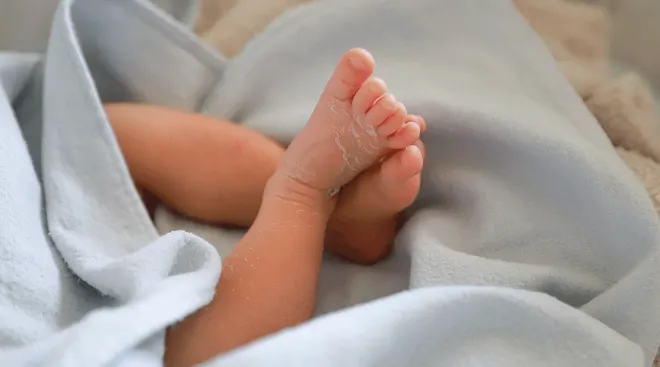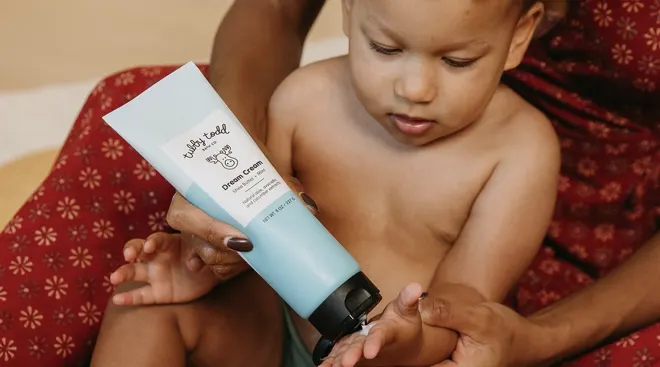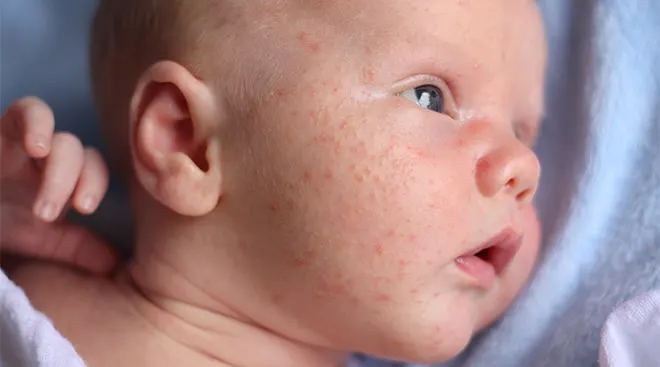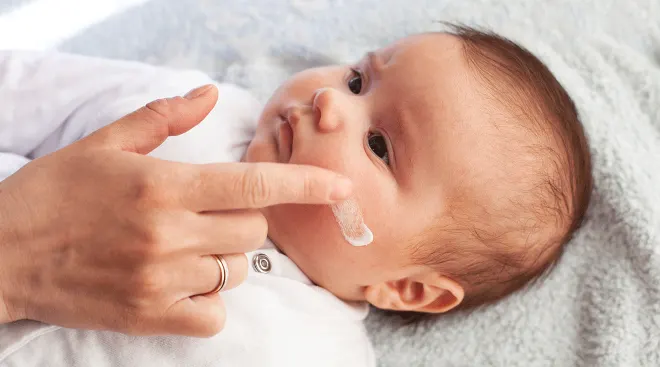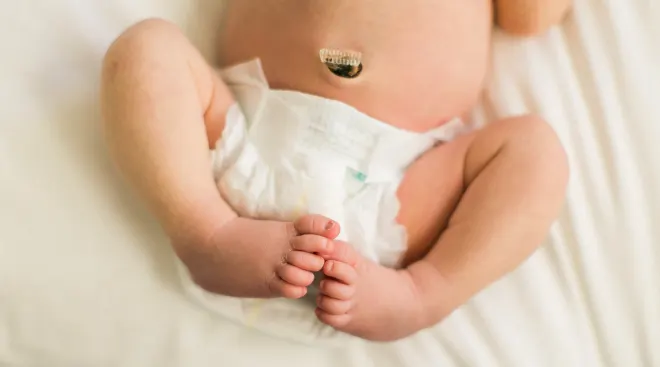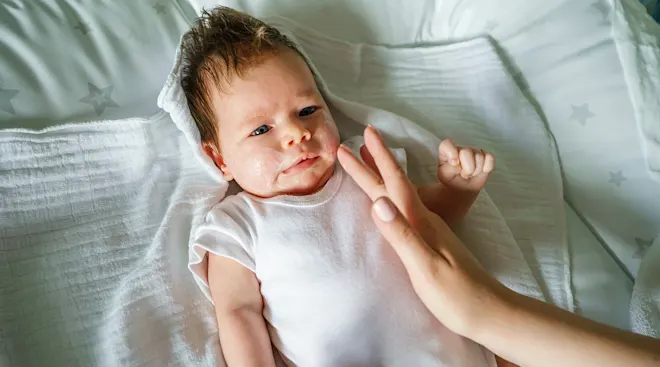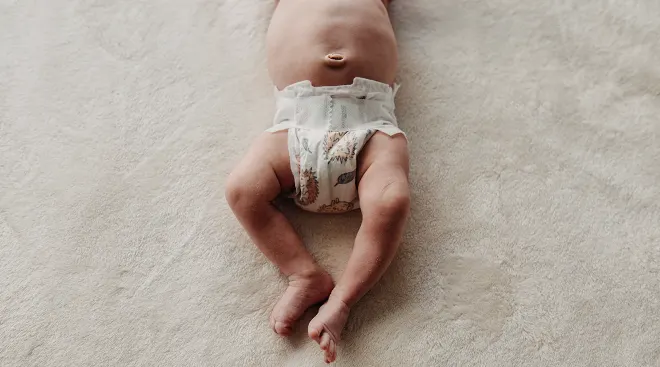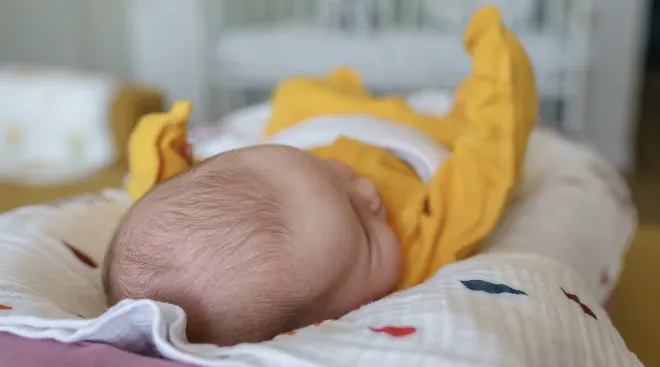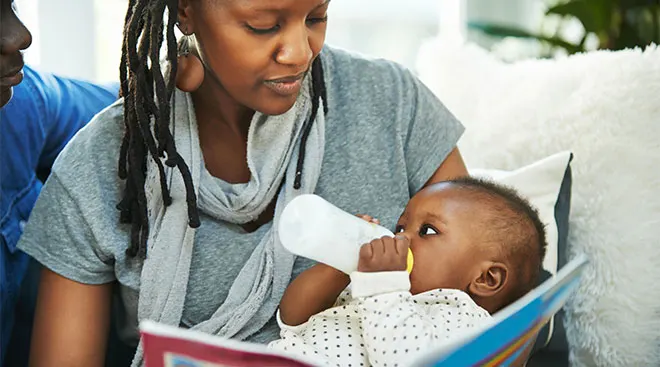Seeing White Bumps in Baby’s Mouth? It Could Be Epstein Pearls
As a new parent, you’re probably spending all your time getting to know baby and learning how to best care for them. So when there’s a foreign bump on your newborn’s body, it can be hard to know what’s causing it and whether it’s a cause for concern. One example of such bumps? Epstein pearls, which are cysts that can appear in baby’s mouth. While they may look concerning, they’re actually nothing to worry about. In fact, Epstein pearls are incredibly common and appear in up to 85 percent of newborns, says Alexis Phillips-Walker, DO, a pediatrician at Memorial Hermann Medical Group Pediatrics in Atascocita, Texas. Here, learn from experts everything you need to know about Epstein pearls in newborns, from what causes them and how to diagnose them to when they go away.
Epstein pearls are small, white or yellow colored gingival cysts that develop in a newborn’s mouth, either on the roof of their mouth or on the gum line where they “almost look like tiny teeth,” says Denise Scott, MD, an Oklahoma-based pediatrician and expert with JustAnswer. You might see a single Epstein pearl or a group of them.
Epstein pearls form while baby’s still in utero, during the formation of baby’s mouth. As their soft and hard palates develop, some skin cells can get trapped and fill with keratin, a protein naturally found in human skin, hair and nails, Phillips-Walker explains. These keratin-filled cells then form small, white gingival cysts known as Epstein pearls. They can be one to three millimeters in size, Scott says, but they shouldn’t grow.
Because Epstein pearls are formed in the womb, they can’t be prevented. They may be present at baby’s birth or develop within the first few weeks of baby’s life, says Natasha Burgert, MD, FAAP, a Kansas-based pediatrician and Philips Avent expert. Epstein pearls can last for a couple of weeks or a few months, but they generally disappear within three months. More good news: They don’t cause baby any discomfort or prompt any other symptoms, and they also don’t negatively affect baby’s development or ability to feed. In fact, Epstein pearls “often break down as the result of friction from a nipple (either breast or bottle) or a pacifier,” Scott explains.
Can Epstein pearls appear on other parts of baby’s body?
While Epstein pearls only refer to gingival cysts found inside baby’s mouth, you might notice similar bumps on other parts of baby’s body, including:
-
The skin on baby’s nose, chin, cheeks and armpits: These bumps are known as milia, Burgert says, which are similar white bumps that form in the womb due to keratin.
-
The tip of a male newborn’s penis: Once again, these form in-utero due to keratin, Scott says. “Penile pearls will often exfoliate, or resolve, on their own or can be removed if bothersome.”
Rest assured that all of these cysts, including Epstein pearls, are usually harmless and go away on their own.
Your pediatrician will be able to diagnose newborn Epstein pearls just by examining baby’s mouth. But due to their harmless and asymptomatic nature, there’s really no reason to treat them, Scott says. However, if your doctor is uncertain whether the bumps in baby’s mouth are Epstein pearls or something else, they may refer you to a specialist, such as an ENT or a pediatric dentist, for further evaluation.
Due to their appearance, it can also be easy for caregivers to confuse Epstein pearls with other, more painful conditions, such as:
-
Teething: Epstein pearls can look like tiny teeth on baby’s gum line. However, Epstein pearls don’t cause any discomfort and shouldn’t make baby fussy, while teething likely will.
-
Bohn’s Nodules: These are also cysts found in baby’s mouth, but these appear in a different area of the mouth and “usually occur on the ridge just behind the front teeth,” Scott says. They also look slightly different, are grayer in color and are often smaller and firmer to the touch, Phillips-Walker says.
-
Thrush: Thrush is a fast-spreading fungal infection caused by yeast. Its early stages may be confused with Epstein pearls due to “small, isolated spots that appear like cottage cheese,” Phillips-Walker says. However, thrush will spread quickly and leave a white residue along various parts of baby’s mouth, including their tongue, lips, cheeks and gums, whereas Epstein pearls will stay stationary.
-
Hand, foot and mouth disease: This infection is caused by a virus that causes rashes on the skin and blisters inside the mouth. However, unlike Epstein pearls, these blisters can be painful and will likely be accompanied by a high fever.
While Epstein pearls are harmless, if you’re ever uncertain about what you’re seeing, or if you’re noticing any bumps on baby getting bigger, changing in appearance or causing discomfort, definitely call your pediatrician, Scott and Phillips-Walker say. They’ll be able to correctly assess the symptoms, diagnose the cause and offer safe, effective treatment where needed.
About the experts:
Denise Scott, MD, is a pediatrician with JustAnswer and a pediatric endocrinologist based in Oklahoma with over 30 years of experience. Certified in culinary medicine, Scott also runs the blog Feed Future Health and is the author of Feed Your Child’s Future Health: Prevent Disease before it Starts. She received her medical degree from the University of Texas Medical Branch and completed her residency at the University of Oklahoma Health Sciences Center, with a fellowship at the National Institutes of Health.
Alexis Phillips-Walker, DO, is a pediatrician with Memorial Hermann Medical Group Pediatrics Atascocita in Atascocita, Texas. She earned her medical degree at Ohio University College of Osteopathic Medicine in Athens.
Natasha Burgert, MD, FAAP, is a pediatrician at Pediatric Associates in South Overland Park, Kansas, an expert partner with Philips Avent and the blogger behind KC Kids Doc. She earned her medical degree from University of Nebraska Medical Center in Omaha, Nebraska.
Please note: The Bump and the materials and information it contains are not intended to, and do not constitute, medical or other health advice or diagnosis and should not be used as such. You should always consult with a qualified physician or health professional about your specific circumstances.
Plus, more from The Bump:
Navigate forward to interact with the calendar and select a date. Press the question mark key to get the keyboard shortcuts for changing dates.











































